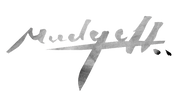What is a Lithograph?
Lithography is a method of printmaking based on the chemical repellence of oil and water. It is a process of printing from a smooth plate; the printing and non-printing surfaces are all at the same level, as opposed to intaglio or relief processes in which the design is cut into the printing block.
Designs are drawn or painted on a level, porous surface with a greasy material, such as conte crayon, grease pencil or a greasy substance called tusche. The most commonly used surfaces are limestone or plates made of metal or plastic. After the image is drawn, the stone is dampened and ink is applied with a roller. The greasy image repels the water and holds the oily ink while the rest of the surface does the opposite.
The stone is chemically treated after the image is created in order to enhance the effect. The artist then places a sheet of paper on the printing surface and runs the paper and the stone or plate through a printing press under heavy pressure. The pressure transfers the inked design onto the paper. To make additional impressions the artist redampens and reinks the surface It is interesting to note that because of the equipment used and the knowledge and skill required for the printing process, lithography lends itself to collaboration between artist and printer. Also pulling a large print requires two people.
